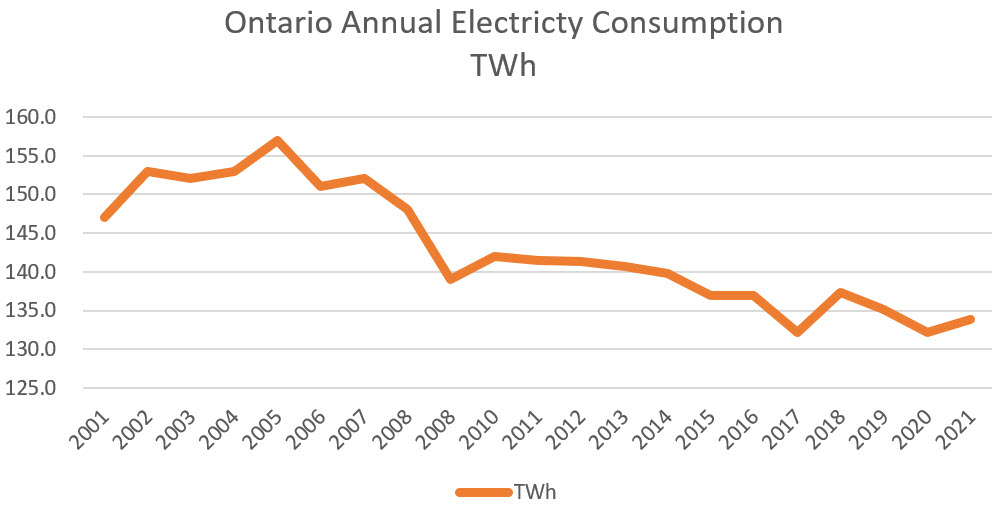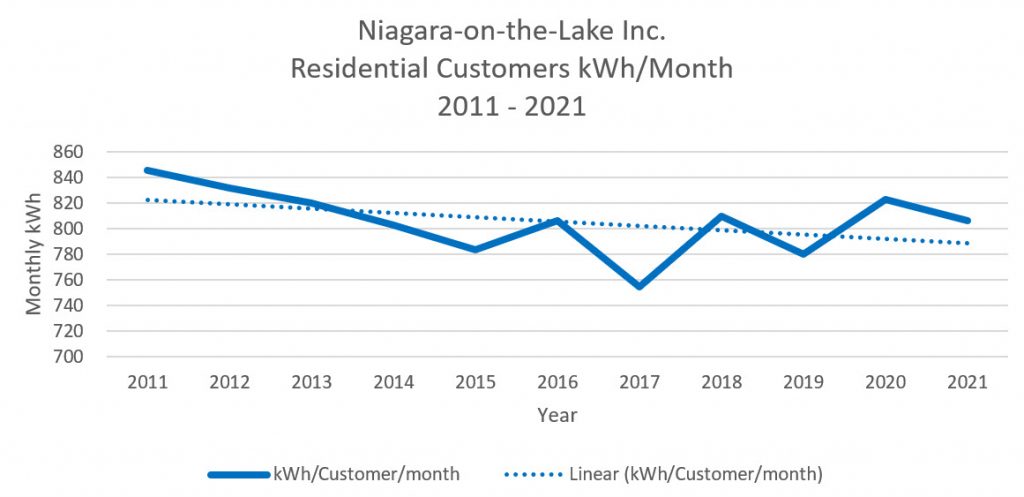NOTL Hydro was very critical of the Conservation and Demand Management (CDM) program that was previously run by the Government of Ontario.
This does not mean we are against Conservation. We highly support its use by customers. In fact, we have been investing to reduce our own electricity use here at the NOTL Hydro office. Some of the investments we have been making or that customers can consider include:
SPACE HEATING & COOLING – More than half of your energy (gas & electricity) in your home is used for space heating & cooling.
- Adjust your thermostat settings. Allow your home to be a little cooler in the winter and a little warmer in the summer. Each degree can save up to 3% of your heating & cooling costs.
| Summer | Home | Away | Winter | Home | Away |
 | >25˚C >77˚F | >28˚C >82˚F |  | <20˚C <68˚F | <17˚C <62˚F |
- Check your doors and windows for potential leaks and ensure that they are sealed and insulated.
- If you have exposed venting, check for air leaks while your furnace is running. Seal vents with aluminum tape. Some studies say you could be losing up to 12% (or more) of your heating & cooling because of leaks in your ductwork.
- Install blinds. This reduces incoming heat in the house substantially if they’re closed on sun facing windows.
- Furness and Air Conditioning replacements rarely pay for themselves so have an upgrade planed when they are near/at their end-of-life.
LIGHTS & OTHER
- If you haven’t already, install LED lights wherever possible. These use 25% of the electricity of incandescent light bulbs and are the best investment to reduce electricity costs.
- LED lights also produce less heat than incandescent lights, lowering your need for air conditioning in the summer.
- Turn off lights when not needed. Timers help make this happen.
- Unplug electronic devices rather than just turning them off remotely. Standby power is estimated to be around 10% of annual home electricity consumption. Naturally, there is a trade-off here between utility and savings so we are not necessarily recommending you unplug a TV that takes several minutes to reload but little used electronics could be unplugged.
- Desktop computers use much more power than laptops; especially if they are old. Something to consider if you are upgrading.
- Consider a tankless water heater if replacing an old water heater.
For more tips – visit https://www.notlhydro.com/learnandsave/at-home/
This also does not mean that NOTL Hydro did not deliver on its CDM mission. The last provincial CDM program was meant to run from 2015-2021. NOTL Hydro was given a savings target as well as a budget to achieve these conservation savings. By the time the program was shut down in early 2019, NOTL Hydro had achieved 103.2% of its target using only 51.3% of its budget.
What NOTL Hydro objected to were provincial conservation efforts that cost a lot of money but did not really generate savings. On a provincial basis, real savings do not come from simply reducing the amount of electricity used. The province has to have enough generation to meet the peak demand for electricity. The objective of conservation is to prevent needing more generation to meet that peak demand. For instance, one of the first and successful CDM programs was in California and was designed to reduce electricity demand so a new nuclear reactor did not need to be built.
The cost of the Ontario CDM program was over $400 million a year. This was part of the Global Adjustment that increases your electricity bill. At that time, Ontario had excess electricity so was having to sell or curtail this energy at a loss. Any reduced consumption from CDM simply increased the excess supply so increased the loss. Much of the Ontario CDM efforts would have no impact on peak demand so was a wasteful cost. For instance, large CDM payments were made to help municipalities convert their streetlights to LED lights. This reduces the demand for electricity at night; a time when there is clearly excess power.

Since 2005, the use of electricity in Ontario has fallen by 16%. This can be seen in the chart. Some of this is undoubtably due to the Provincial conservation programs. However, we would argue that the two biggest drivers were the decline in industrial demand stemming from the great recession of 2007-2008 (see the large drop in those years) and the general reduction in the use of electricity as life became more digital and electrical equipment and appliances were switched to more efficient and newer models.

The impact of these efficiency improvements can be seen in the chart (above) showing the average monthly consumption of electricity by residential customers in NOTL. There is variation year to year due to the weather and there is an uptick in 2020-2021 due to the pandemic but the general trend is downward.
The Ontario government body responsible for managing the supply of electricity, the Independent Electricity System Operator (IESO) believes the use of electricity will be increasing going forward due to population growth, growth in industrial demand and the electrification of transportation. I agree. When you combine this with the planned closing of the Pickering Nuclear Plant there will be a need for future conservation efforts to limit the amount and costs of new generation that is needed. At the same time there will be new tools to reduce the amount of new generation needed such as energy storage, electric vehicles and community solar. I hope any new conservation or energy replacement programs will be designed to achieve real savings using the most cost-efficient tools available.